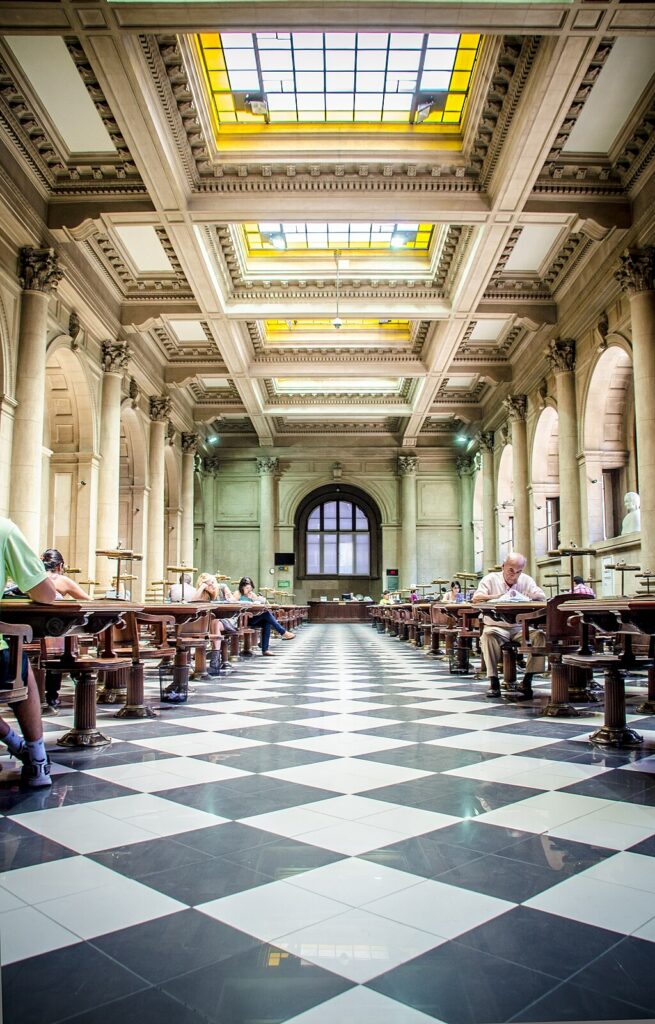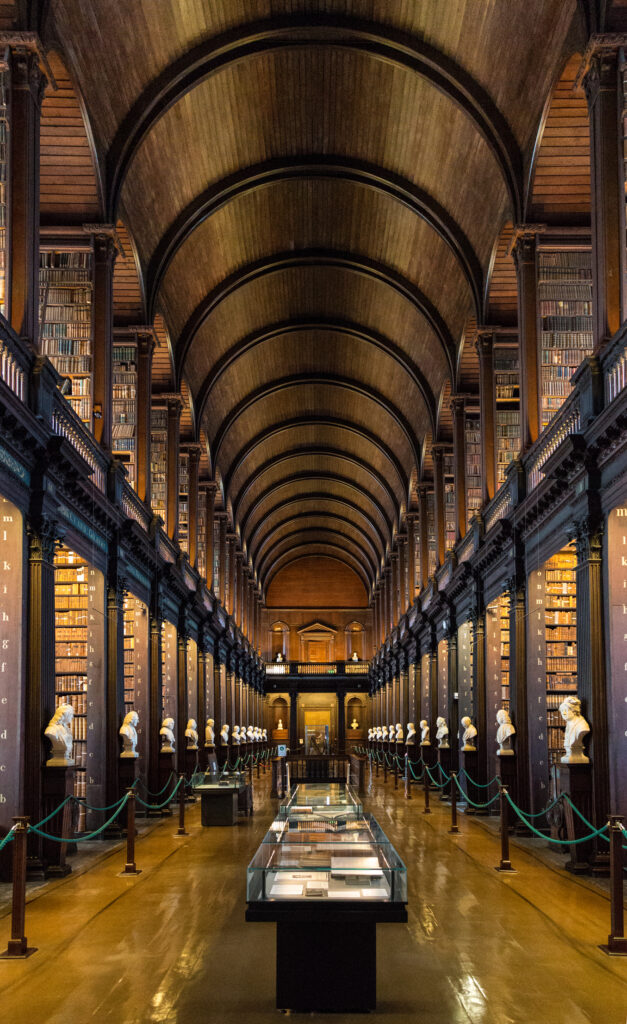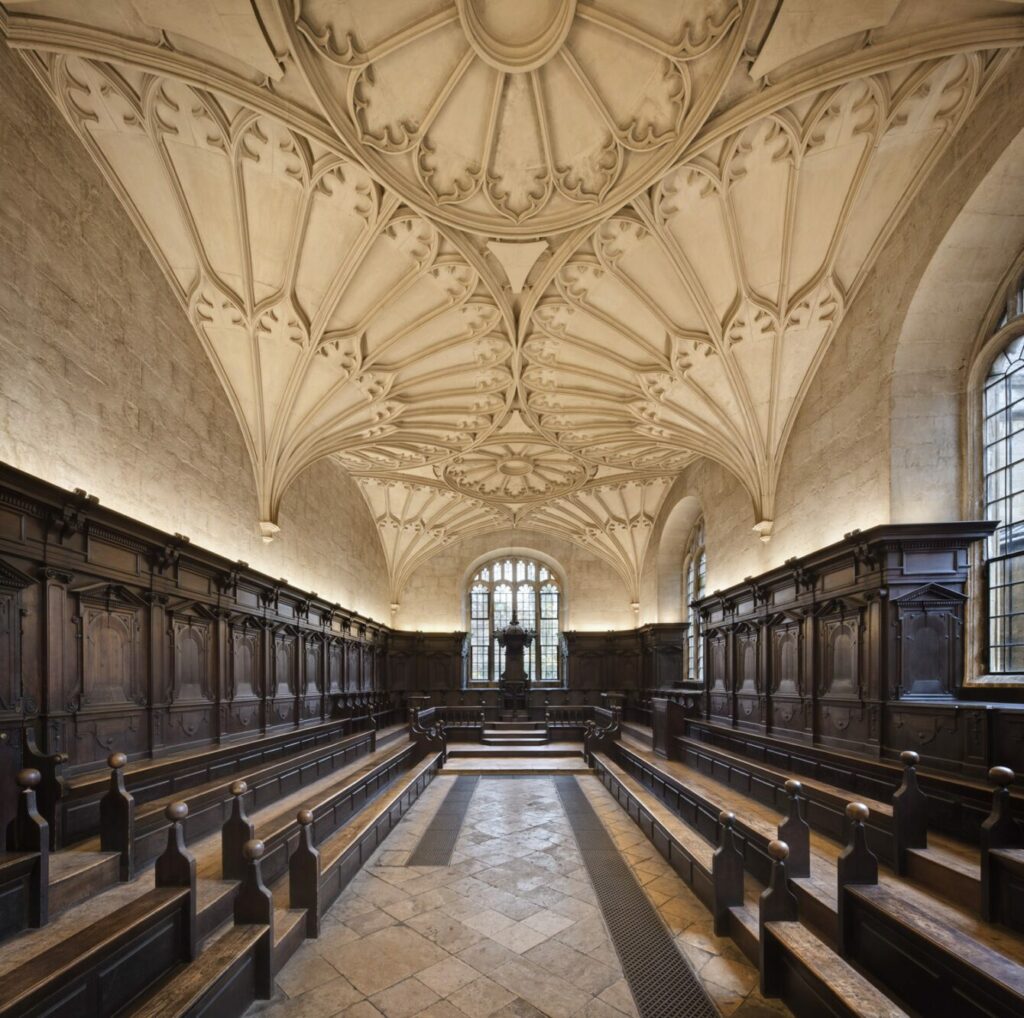From the dramatic arches and towering ceilings of the Medieval period to the futuristic designs of today, these libraries are some of the most beautiful in the world. Each is a one-of-a-kind destination perfect for hiding away in reading nooks, quiet studying or simply admiring an architectural marvel.
1. Oodi Library in Helsinki, Finland


Designed by ALA Architects, Oodi library serves as a central meeting place for residents of Helsinki, Finland. The living room-like space features an ultra-minimalist interior that offers an airy, light and open place to read and study. Sleek lines, lofty white ceilings, light wooden floors and a large facade of glass windows overlooking the city make visitors feel among the clouds as they enjoy the building’s amenities, which include the dedicated library space, housing exhibitions, 3D printing workshops, a recording studio, theater, event space and a restaurant and cafe.
2. Bibliothèque Nationale de France in Paris, France

As one of the oldest libraries in the world and one of the most significant structures in France, the Bibliotheque Nationale (National Library) of France holds loads of important history, in addition to books. The library’s famous Oval Room, which was designed in 1897 by Jean-Louis Pascal and completed in 1932 by Alfred Recoura, features stunning arches and a rounded ceiling with skylights and intricate details. The walls are adorned with mosaics, along with towering shelves that house over 20,000 volumes of books, and lead into 160 private reading spaces.
3. Trinity College Library in Dublin, Ireland
The Old Library at Trinity College in Dublin is one of the greatest works of architect Thomas Burgh. Constructed between 1712 and 1732, this library is a temple of literature, featuring two stories of floor-to-ceiling wooden shelves filled with historic books that are still accessed by sliding ladders. In the famous 65-meter-long chamber known as the Long Room, visitors walk beneath arched ceilings as they pass by intricate columns and marble busts of some of the most important scholars and philosophers to the college. The library is also home to a copy of the 1916 Proclamation of the Irish Republic and the Book of Kells.
4. John Rylands Research Institute & Library in Manchester, England

A breathtaking example of late Neo-gothic architecture in Europe, the John Rylands Library in Manchester, England opened to the public in 1900 after being founded by Enriqueta Augustina Rylands in memory of her late husband and Manchester’s successful industrialist, John Rylands. Inside, the beautiful building resembles the striking features of a cathedral with a crimson walkway, grand stained-glass windows, ribbed vault ceilings, stone columns and warm lighting that lines the walls to give a candle-light glow.
5. George Peabody Library in Baltimore

Connected to Johns Hopkins University, George Peabody Library in Baltimore is a standing treasure of the Gilded Age featuring thousands of bookshelves that climb up to the 61-foot ceiling across five tiers of cast-iron balconies. The library opened to the public in 1878 and features a stunning design by Baltimore architect Edmund G. Lind, in collaboration with the Peabody Institute’s first provost, Dr. Nathaniel H. Morison. Though focussed on research into the 19th century, the library’s gorgeous tiled floor, ornamental details, open ceiling and towering bookshelves make the building a popular background for special events like weddings and banquets.
6. Hachioji Library in Tokyo, Japan

Designed by Ito Toyo, one of Japan’s leading architects, Hachioji Library is one of two libraries at the Tama Art University campus in Tokyo. The modernist building is a glimpse into the future with large industrial arches and glass walls that contour the natural slope of the library’s first floor, creating a remarkable and functional space. Completed in 2007, Hachioji Library boasts stunning city views, an all-purpose gallery and event space, a theater area with a big screen, private reading seats and about 100,000 books, including about 77,000 Japanese books.
7. National Library in Santiago, Chile

Chile’s National Library stands in the center of Santiago as a significant landmark that honors the country’s history, as well as architecture influenced by French neoclassicism. The library was completed in 1925 and features beautiful columns and arches that point to the soaring ceilings adorned with stained-glass skylights and cozy, antique chandeliers. Visitors can browse an extensive collection of books and manuscripts across two floors that are accessed by carved marble staircases and decorated with sculptures and paintings from some of the country’s most important artists.
8. Stuttgart City Library, Germany
One of Stuttgart, Germany’s most photographed buildings, the all-white Stuttgart City Library is just as Instagrammable as it is educational. The library was designed by Yi architects in 2011, and features a unique, cube-like exterior that emits blue light at night. Inside, the inverted ziggurat reading room is completely dressed in white aside from the books behind zig-zag staircases that connect the multiple floors.
9. Biblitoeca Marciana in Venice, Italy
Built in 1537 by revered sculptor and architect Jacopo Sansovino, Biblitoeca Marciana in Venice, Italy is one of the earliest surviving public libraries and repositories for manuscripts in Italy with over 750,000 books, and 13,000 manuscripts. The classic Renaissance architecture is a testament of the library’s history and features stunning interiors where visitors can admire statues, ornamental ceilings, beautiful stone and brick walls and more.
10. The Bodleian Library in Oxford, England
The Bodleian Library is one of the oldest in England, with the building itself dating back to the 1300’s. The breathtaking designs of the library are an example of the development of architecture beginning from the Middle Ages to today, with highlights such as stunning dome ceilings, arches with striking stone work, large windows and historic artwork.














